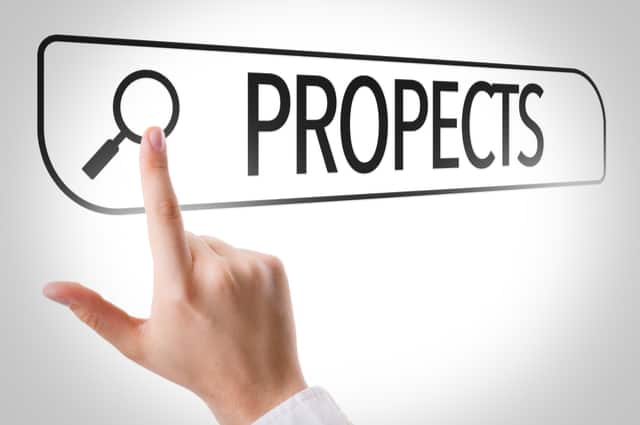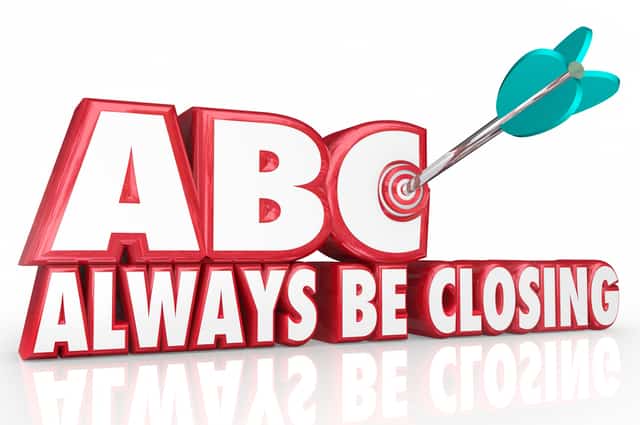B2B Sales Strategy – Is it really important & helpful for businesses?
By 2023, it is anticipated that B2B e-commerce revenues will total $1.8 trillion. Understanding the intricacies of the contemporary B2B sales process and adhering to effective sales strategies are prerequisites if you want to not only meet but significantly exceed sales objectives.
B2B sales are termed business-to-business sales. When a firm sells its goods or services to another business, this is referred to as business-to-business (B2B) sales.
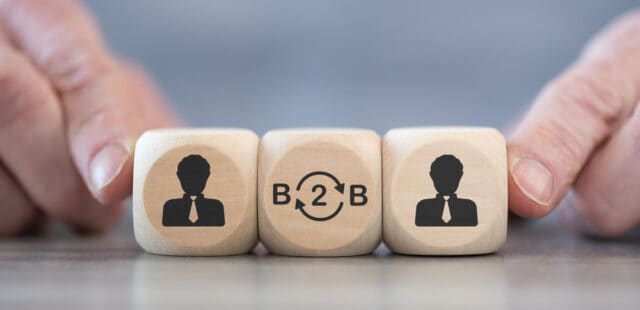
Similar business-to-consumer (B2C) transactions, in which they offer directly goods and services to customers, are comparable to this.
To earn income, B2B firms must maintain a staff of qualified B2B sales professionals. This is because B2B sales involve higher price points, more intricate processes, and many touchpoints across multiple channels.
Examples of simple B2B sales include:
- Organizations that offer businesses professional services (like market research).
- Companies that offer businesses digital/software services (like CRM).
- Producers and distributors of raw materials for manufacturers.
What is the B2B sales process?
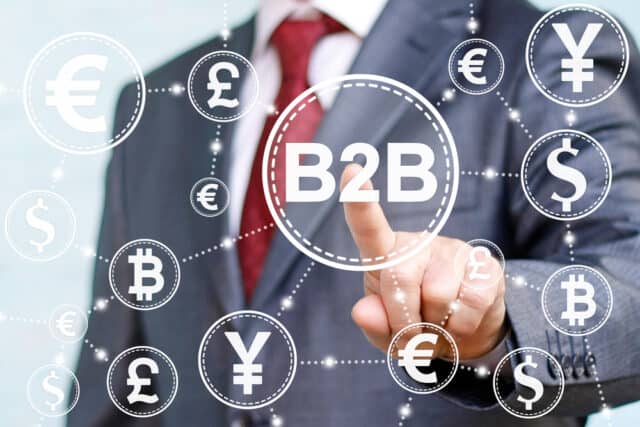
A successful B2B sales strategy must be well-planned and carried out because B2B selling is a challenging procedure. For diverse buyer personas and sales scenarios, it uses a wide variety of sales approaches and adheres to a certain method.
Your industry, business, and sales organization will determine how many stages there are and what they are called in your sales process.
Strategies and Techniques for B2B Sales Reps
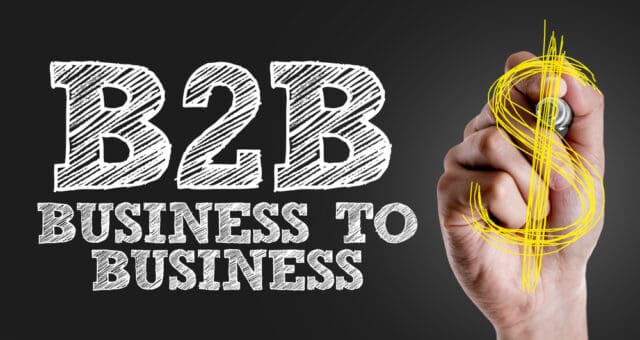
The buying process of a company’s target clients should be reflected in the ideal sales procedure. A successful B2B sales process, according to Sales Hacker, is client-centered, precisely defined, consistent, goal-oriented, trackable, and flexible.
Revenue growth results from a sales process that is optimized. The complexity of B2B sales has increased over time, and your sales force now has to deal with a variety of decision-makers, user experience, channels of communication, and rivals.
In those circumstances, gaining a competitive edge needs far more than just individual grit and excellent sales software.
Organizations require a comprehensive B2B sales strategy, a strong technological stack, and a variety of strategies. This will help them move prospects closer to a favorable buying behavior in order to stay relevant and ensure a healthy win rate.
Beginning with talent

Artificial intelligence and data science, among other innovative technologies, are now crucial to the profitability and long-term viability of corporate enterprises.
However, since they’re the ones grooming prospects, developing trust, relieving problems, and closing sales, customer-facing humans continue to represent the most significant part of your revenue system.
Therefore, a key priority on the agenda should find, onboard, and train skilled sales professionals. As soon as sellers step foot on the sales floor, make sure they have the abilities, characteristics, and attitudes.
Ideal B2B sales professionals embrace technology and have good interpersonal skills regarding providing business and selling skills.
Implement strategies, Skills, and Techniques.

Outbound sales are the major focus of B2B sales. B2B sales reps participate in the actual sales transaction; instead, they serve more than brand advocates, advertisers, and problem-solvers.
As a result, they use a range of software, such as a call dialer, customer relationship management, and Sales Engagement Platform, to contact a big number of prospects.
There are many outstanding resources available. Which sales strategies and solutions will suit your business and sales process, then?
Some strategies are tailored to particular sales cultures and situations, and a B2B sales approach that worked well for one company might not provide the same results for another.
SNAP Selling, NEAT Selling, Account-Based Selling, and Solution Selling are a few of the most well-liked methods. There are a lot more frameworks and techniques utilized in B2B sales, so you should figure out which one works best for your company.
Here are several general selling strategies that, regardless of the approach you use, can improve revenue performance and operational efficiencies:
- When creating your buyer personas and ideal customer profile, be exact and unambiguous.
- Align all departments that generate money, particularly sales and marketing, with the same overarching strategic objectives. When necessary, include various groups within these units in the same campaigns.
- Create a culture of achievement and customer focus. You aren’t only selling. Making people feel amazing after utilizing your goods is the real aim.
- Create product changes, tweaks, or (new) releases based on client feedback.
- Accept innovative tools and educational initiatives that let salespeople sharpen their focus and hone their techniques.
- Playbooks, templates, strategies, and sequences are not set in stone. Use experimentation and A/B testing to generate continual improvement.
- Customers in the B2B market need customization and care. Additionally, they seek real counsel rather than telemarketers.
In contrast, B2C sales heavily rely on marketing to raise awareness of the brand and attract customers.
B2C salespeople typically spend significant amounts of time on the original sale rather than talking about the product or following up with potential customers because the sales process is quick and transactional. Door-to-door, retail, and e-commerce are the three B2C sales techniques most frequently used.
B2B sales funnel: What is it?
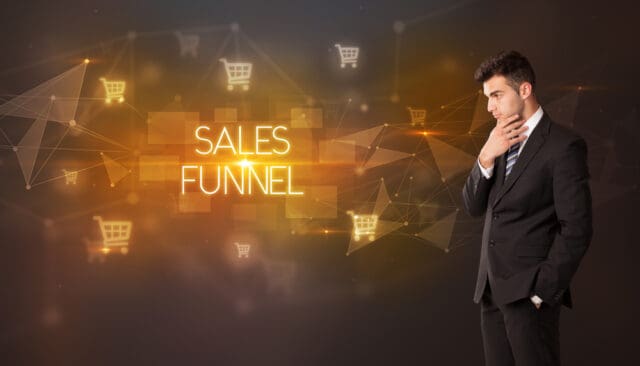
Unlike the B2B sales process, which focuses on the seller’s perspective, the B2B sales funnel is aligned with the buyer’s journey.
By highlighting the cognitive or emotional stages a prospect experiences during the buying process, the sales funnel frequently acts as a depiction of the prospect’s approach to or the probability of making a purchase.
What distinguishes B2B sales from B2C sales?
Business-to-business (B2B), as well as business-to-consumer (B2C) sales, differ principally in their target customers, as their names imply. B2B companies are companies selling to other businesses.
Direct sales from a company or salesperson to the customer are known as B2C sales. They often involve solely the consumer’s decision and are less extensive than B2B sales.
Following are the primary distinctions between B2B and B2C:
The price point.
When compared to many consumer goods, B2B products and services are typically more expensive.
Size of the potential market.

B2B businesses may only have a few to several hundred potential clients, whereas B2C businesses target thousands to millions of consumers.
The complexity of the sales process.
B2C shoppers may quickly decide to make a purchase. However, B2B buyers must patiently nurture leads before making a wise buying decision.
The number of decision-makers.
A B2B deal needs approval from several stakeholders, but only one person is needed for a B2C purchase.
Sales volume.
Because selling to businesses is more complicated than selling to consumers, B2B sales typically have longer sales cycles.
Sales strategy.
B2B salespeople excel by using sophisticated selling strategies and carefully calibrated sales processes. Although they work in a less demanding setting, B2C sellers nevertheless need to improve their selling abilities.
customer support
B2B organizations place great importance on customer service, contentment, and success in order to prolong and grow customers’ lifetime value.
Target audience
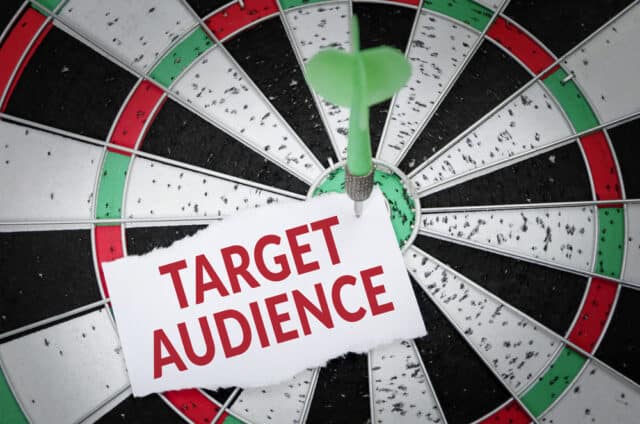
Since departmental or organizational budgets hold B2B buyers accountable, they typically are corporate decision-makers who are knowledgeable, careful, and strategic. They are therefore heavily focused on ROI.
On the other hand, individual customers in the B2C market typically worry more about price, value set (if the service or product can actually meet demand or need), and brand appeal than they do about ROI.
While some B2C products (such as real estate, vehicles, boats, etc.) have high price points, the majority of B2C products have lower price points and only one or two decision-makers.
Because of this, the usual business-to-consumer (B2C) sales cycle is substantially shorter than that of the normal business-to-business (B2B) sales cycle.
The structure of contemporary B2B sales procedures
In the past, the B2B sales process was less complicated. A buyer might locate a vendor while looking for a solution, speak with a salesperson about their requirements, and then consult decision-makers.
They would shake hands after an agreement if they were satisfied. Marketing would generate leads for vendors, and sales would follow up with and close them. The purchasing process was linear.
However, the intricacy of the B2B sales process has collapsed thanks to the internet, as it has in most sectors. The relationship between sales and marketing is intensifying.
Now, both work in unison to generate leads and close deals. And this is how the buyer’s path to sale appears: All feasible ideas and solutions are mapped out.
Buyers consult their network for suggestions on vendors if they require one. They will also look at social media, forums, and review websites.
They’ll decide to buy based upon the information obtained before.
They may get in touch with a vendor or follow up with one who has recommended them or talked with them if they haven’t been approached.
The level of control that buyers have in the present B2B sales process is extraordinary.
They are free to move between stages, backtrack from the point of purchase, and enter and exit the funnel at any time.
The B2B sales process has evolved from a narrow, multi-platform approach with a single linear funnel to one with many zigzagging touchpoints with buyers.
What are the options for B2B companies as a result?
The key B2B sales strategies that are effective

The issue with B2B sales is that there are too many methods and tactics, not that there aren’t enough.
Should you produce in-depth research white papers or videos? Should you Use PPC Advertising? The finest strategies focus on the customer.
They were created with the sophisticated buyer in mind and the modern B2B sales procedure. The top 3 are as follows:
Account-based selling can help you align sales and marketing.
The era of separate sales and marketing divisions is over. There is no longer a line to distinguish between pulling consumers into the funnel and maintaining them there.
Roles and duties continue to be connected and frequently cross paths; it is more like a Venn diagram.
However, there are times when marketing and sales are at odds, and this misalignment reduces the performance of B2B salespeople.
Account-based sales (ABS) turn the conventional funnel on its head by concentrating on target accounts and incentivizing communication between sales and marketing.
An ABS strategy begins with a solution that the buyer is looking for and one that the business is confident it can solve, just like the commencement of the B2B buyer journey.
In order to give a customized solution to the issue that customers are trying to address, sales and marketing must strongly believe in the decision-makers and how to do it.
With captivating material, win them over.
Popular B2B marketers have a content marketing plan that is documented in 69% of cases. Given that B2B purchasers view an average of 13 pieces of content before making a purchase, it’s not difficult to comprehend why.
The distance between the customer and supplier is filled with content. It leans the scales into the vendor’s favor while making a transaction.
Effective content, however, goes beyond simply reporting about the office pet of your organization.
Establishing a relationship, fostering trust, and increasing brand credibility, it’s about finding solutions to problems.
HubSpot has quickly expanded from a start-up to a $513 million firm thanks to content marketing.
Use social selling to turn chilly leads into brand devotees
The latest method for B2B sales representatives to develop connections and close deals before rivals are aware of the situation is through social selling.
New Horizons discovered that ROI was beginning to decline as a result of relying on conference lists to obtain new leads.
Due to leads being close to making a purchase by the time sales professionals reached them, sales were declining.
They needed to appear early on purchasers’ radars in order to revive decreasing sales.
They found success with LinkedIn’s social selling strategy.
In the end, sales representatives generated $1 million in income, 57 percent of their chances were closed, and 1.7 million dollars were won.
A “social hour” was instituted by the COO since social selling was so successful at generating leads. Reps now spend one hour each day on LinkedIn researching and engaging with leads.
What’s the difference between lead generation and prospecting?
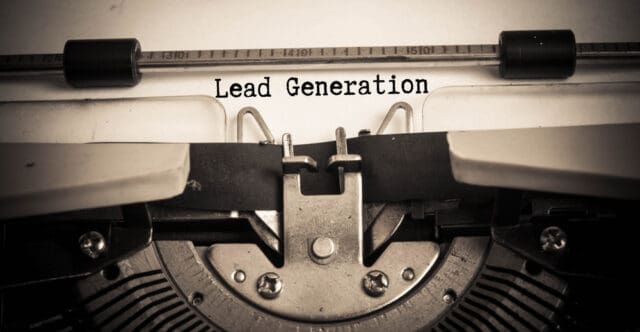
Contrary to popular assumptions, lead generation and prospecting is not the same thing. Their objectives and approaches diverge greatly. One can be more useful than the other in some circumstances.
Here, we’ll examine the distinctions between lead generation and sales prospecting, as well as when each strategy is most effective.
What distinguishes prospecting from lead generation?
Prospecting is a one-on-one task typically performed by sales representatives. The goal is to pique the interest of potential targets who may not be familiar with you.
It is often a short-term strategy, a rapid technique to find and qualify new clients before moving them through the sales funnel, in contrast, to lead generation.
Sales representatives engage in a variety of B2B prospecting activities, including:
- cold calling
- Direct messaging on LinkedIn
- outbound emails
On the other hand, lead creation is typically a one-to-many marketing strategy that is data driven.
It takes longer than prospecting to increase awareness and engagement in a larger target market.
Because they have already interacted with your marketing materials and brand, leads created in this way are warmer and pre-qualified than those obtained through prospecting.
Several B2B lead generation techniques include:
- Page landings
- printable whitepaper
- Pop-up windows
How can you choose which to use?
Empty pipelines might happen if you don’t know whether to use lead creation or sales prospecting.
Therefore, it’s crucial that you use the proper strategy at the appropriate time.
If your pipeline is starting to seem low and you need to swiftly restock it, go with prospecting.
For instance, you can quickly schedule appointments with eligible leads.
You’ll need quick thinking and the ability to handle rejection on a regular basis if you want to achieve.
On the other hand, lead generation is preferable if time is on your side. It’s a longer-term strategy that typically yields higher quality leads later on.
Create material that is entirely focused on your Ideal Customer Profile after first developing that persona.
You can increase brand exposure and engagement by drawing on new customers.
And finally, add more consistent warm or hot leads to your pipeline.
When lead generation and prospecting are combined.
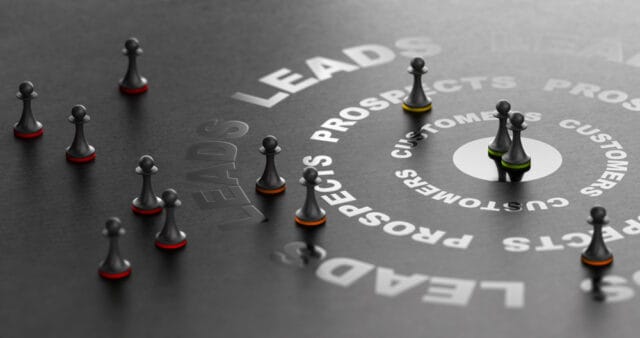
Prospecting is more typically done by the sales team, whereas lead generating is typically done by marketing.
However, when the two functions combine, it becomes considerably more effective. The sales and marketing departments in any B2B or SaaS firm should work closely together.
Getting high-quality, focused leads into the funnel should be their shared goal.
Together, sales and marketing should define their goals.
To achieve the ideal mix between lead generation and prospecting alignment, they must also believe in a sales strategy, lead definitions, and anything else that would improve their communication.
It will prevent the two teams from completing the same tasks again or stepping on each other’s toes.
The data below demonstrates how effective aligned lead creation and sales prospecting can be:
- Deal closure is 67 percent more effective.
- Customer retention can increase by 36%.
- Sales success rates can rise by 38%.
- Over three years, revenue growth and profit growth are, respectively, 24 and 27% faster.
Conclusion
Though they may use various techniques, customer-centricity, personalized experiences, and integrity are now common business imperatives across B2B and B2C sales.
Any B2B company must constantly prospect for new customers. You cannot expand if leads are not coming in.
Fortunately, using these sales prospecting techniques and tactics can enable you and your team to consistently attract qualified leads to your company.
These tactics, which range from social media to cold outreach, will help you make progress and guarantee that your lead pipeline will never run dry.
Subscribe to our Newsletter
Sign up to receive email updates on new product announcements, exclusive sales and marketing content, special offers on email validation plans, and more.
We send curated content as per your preference and do not indulge in spam!
What would you like to know about
We’re committed to your privacy. TuxMailer uses the information you provide to us to contact you about our relevant content, products, and services. You may unsubscribe from these communications at any time. For more information, check out our privacy policy.
